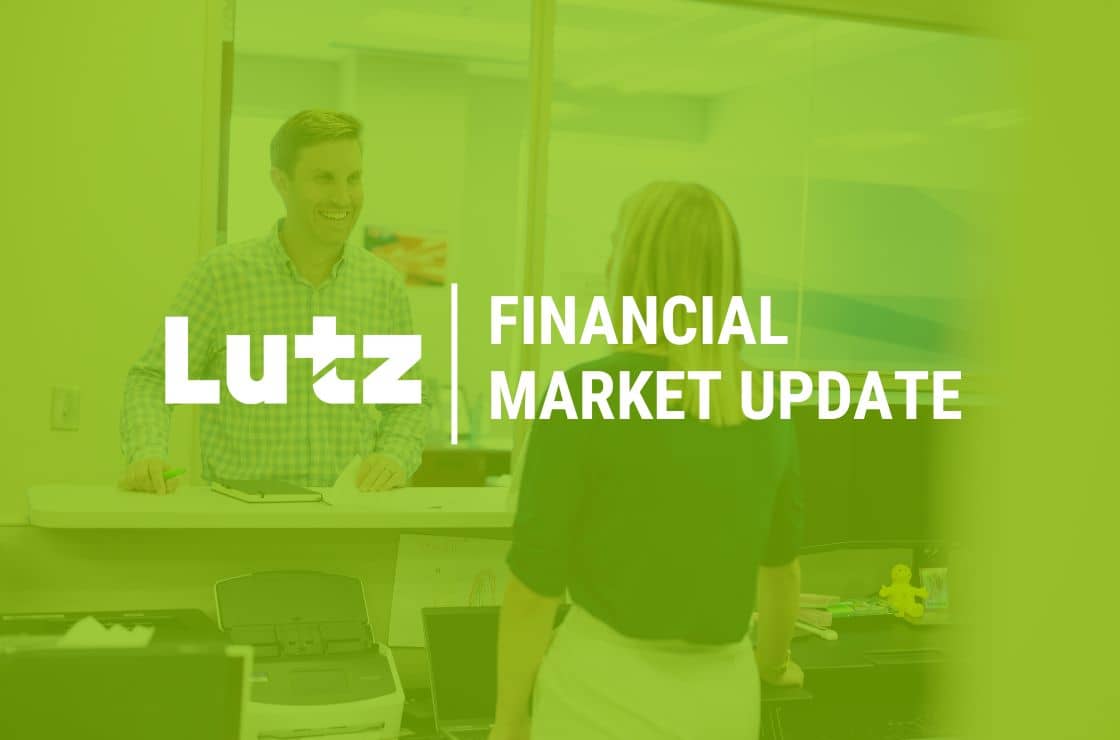
BEHAVIORAL FINANCE AND PLAN DESIGN: FOUR WAYS TO BOOST PARTICIPATION
Though many employees are aware that behaviors such as enrolling in and contributing sufficiently to their company 401(k) can help them prepare for a successful retirement, too often they fail to develop the necessary saving and investing habits. One reason for this may be an outsized influence of emotion, biases and faulty heuristics on financial planning at the expense of more rational decision making. And this could also be why participant engagement strategies that rely exclusively on financial education are sometimes met with limited success.
Behavioral finance is the study of how psychology plays a role in investment decisions and market behavior. By leveraging the principles of behavioral finance, sponsors can engineer plans to encourage higher participation and contribution rates as well as help employees overcome procrastination, inertia and fear-based decision making.
1. Auto-enrollment 2.0
Many new hires waive enrollment due to financial constraints, but sometimes even more financially secure employees avoid enrollment as well. A well-designed auto-enrollment feature can help overcome this obstacle. By auto-enrolling participants every two to three years — instead of just once — and communicating clearly with employees about the reasoning and advantages for doing so, employers can assist workers in taking a crucial first step toward achieving retirement readiness.
2. Limiting Fund Options
The notion of a “paradox of choice” refers to the concept that too many options can overwhelm decision making — and this phenomenon can likewise negatively impact how participants approach decisions pertaining to retirement savings. When faced with a too-large array of investment options, employees are more likely to avoid enrolling altogether. In fact, a Department of Labor analysis shows that for every fund added to an investment menu, participation decreases by .15-.2%. Fidelity Investments has noted this trend, and states that the largest plans under its management now offer fewer than 16 options in the company’s core lineup, which is notably 10 fewer than in 2010.
3. Well-timed Auto-escalation
Many financial advisors recommend that workers strive to achieve a 15% retirement plan contribution rate. However, participants often don’t increase their contributions due to any number of financial concerns — particularly the liquidity constraints inherent to defined contribution plans. But increasing allocation rates automatically can boost retirement readiness by getting participants closer to that target over time. And this may be most effectively timed when increases are paired with pay raises.
4. Target Date Fund QDIA Adoption
Some participants neglect rebalancing their 401(k)s, which can lead to inappropriate levels of investment risk as they approach retirement. In fact, a TIAA-CREF study found that the median number of reallocations was actually zero. One way to combat this problem is the implementation of target-date funds (TDFs) as the plan QDIA, which rebalance automatically to decrease risk as participants near their retirement date. TDFs are becoming popular in core investment lineups, and some newer, more flexible products even allow participants to customize their TDF to reflect their personal risk tolerance.
Misplaced Fear Can Impact Sponsors Too
A number of employers are reluctant to implement auto-enrollment and auto-escalation, fearing participants may react negatively, but data shows that employees largely approve of such features. In fact, according to one study, 90% of participants remain enrolled in plans following auto-enrollment, and 83% state that they’re comfortable with automatic increases, suggesting such fears may be misplaced. Moreover, auto features that, in effect, help design retirement plans for greater success, align with the broader industry trend toward “do it for me” financial wellness, where participants are increasingly removed from certain aspects of investment decision making. So, if you aren’t implementing auto features in your retirement plan, consider giving them another look.
Sources:
https://www.plansponsor.com/vanguard-report-underscores-power-automatic-enrollment/
https://www.principal.com/businesses/trends-insights/why-your-401k-needs-automatic-escalation
https://sponsor.fidelity.com/bin-public/06_PSW_Website/documents/Building_Financial_Futures.pdf
https://clear.dol.gov/study/how-much-choice-too-much-contributions-401-k-retirement-plans-iyengar-et-al-2003#:~:text=The%20analysis%20demonstrated%20that%20as,0.15%20to%200.20%20percentage%20points
PEPS REVISITED WITH REPROPOSED IRS RULE
The Setting Every Community Up for Retirement Enhancement (SECURE) Act of 2019 enables two or more businesses to form a pooled employer plan (PEP) regardless of whether they’re related by industry, location or other association. In essence, the act created a new type of multiple employer plan (MEP) that significantly expands access to tax-advantaged retirement accounts. It also reduces administrative burdens for small- to medium-sized businesses looking to offer their employees a retirement plan benefit.
PEP Benefits
Organizations participating in a common PEP are not only afforded tax breaks but are unburdened from the task of filing separate form 5500s. The plans are professionally administered by a pooled plan provider (PPP), who assumes fiduciary liability over the plan. PEPs also offer savings potential as a result of sharing the costs for plan management and administration among participating employers. While employers may now cross industry lines to join forces in a retirement plan, providers may have their own specific eligibility criteria that businesses must satisfy.
PEPs were projected to have more limited customizability, but the already fast evolution is proving that may not be the case. Adopting employers of PEPs may tailor their plan design with certain features including: a safe harbor provision, auto-enrollment, auto escalation, profit sharing and Roth contributions. They may also adopt various plan eligibility, matching and vesting requirements among many others.
While PEP benefits for participating employers are many, one potential drawback occurs when one of the businesses fails to uphold one of its fiduciary responsibilities. This matter is currently being considered by the IRS, which recently proposed regulations pertaining to how MEPs and PEPs must address such situations — the so-called “one bad apple” rule. It also details administrative functions of the PPP, which include, but are not limited to:
- Monitoring compliance and making updates with respect to ERISA, pertinent tax codes and terms of the plan, including satisfying all required reporting and disclosures.
- Performing required nondiscrimination testing.
- Maintaining accurate plan data and processing participant transactions.
How Do You Like Them Apples?
Should one of the participating employers fall short in its fiduciary obligations, the one bad apple rule sets forth the actions that must be taken including: notices to be sent to the employer, actions the plan administrator would take if the employer failed to either correct the failure or create a spinoff of its portion of the plan, and any related deadlines. The rule would also require a statement indicating that plan participants become fully vested in the event the employer does not remedy the failure or establish a spinoff. As currently proposed, the final deadline for the employer to take action is considerable — up to eight months after its receipt of the first notice. The IRS has scheduled a public hearing on the proposed rule for June 22. But prevalent legal thinking is that the “one bad apple” rule will likely be eliminated or mitigated.
Sources
https://www.paychex.com/articles/employee-benefits/pooled-employer-plan#:~:text=What%20is%20a%20Pooled%20Employer,such%20as%20a%20trade%20group
https://www.federalregister.gov/documents/2022/03/28/2022-06005/multiple-employer-plans
https://www.shrm.org/resourcesandtools/hr-topics/benefits/pages/irs-re-proposes-one-bad-apple-rule-for-multiple-employer-plans.aspx
IS PARTICIPANT CHOICE A “GET OUT OF ERISA COURT FREE CARD”?
Finally, something everyone could agree on — at least on the Supreme Court of the United States. The question before the court in Hughes v. Northwestern University was the plausibility of a breach of fiduciary duty claim stated by current and former participants in two university retirement plans. SCOTUS ruled that the petitioners in the case, originally dismissed by a district court and upheld by the U.S. Court of Appeals for the Seventh Circuit, did in fact plausibly state their claim. The Supreme Court vacated the Seventh Court ruling and remanded the case for further review.
The defendants in the case were alleged to have breached their fiduciary duty by:
- Failing to monitor and control excessive recordkeeping fees, which negatively impacted plan participants.
- Offering retail share classes of investments with higher fees than those charged by otherwise identical share classes of the same investments.
- Offering too many options that were likely to confuse investors
SCOTUS found that the Seventh Circuit erroneously relied on “participants’ ultimate choice over their investments to excuse allegedly imprudent decisions by respondents.” In other words, the court asserted that the provision of sufficient investment choices to participants does not automatically exculpate fiduciaries from imprudent actions.
Plan sponsors looking for stricter pleading standards in such cases in the hopes of reining in the recent wave of excessive fee litigation were likely disappointed in the court’s decision. However, they may pay particular attention to some employer-friendly language found in the opinion penned by justice Sonya Sotomayor: “At times, the circumstances facing an ERISA fiduciary will implicate difficult tradeoffs,” she wrote, “and courts must give due regard to the range of reasonable judgments a fiduciary may make based on her experience and expertise.”
Ultimately, the court’s decision suggests a myopic focus on either choice or cost may be misplaced. While the court voiced a need for a contextual approach to evaluating fiduciary decision making, plan sponsors must remain vigilant with respect to actively monitoring and controlling fees. They must also evaluate the prudence of including each individual investment in a plan’s lineup.
Over the prior two years, more than 150 excessive fee lawsuits have been filed. Twenty of those cases had been put on hold pending the Hughes decision.
Sources
https://news.bloomberglaw.com/us-law-week/explosion-of-401k-fee-litigation-gets-boost-from-supreme-court
https://news.bloomberglaw.com/litigation/dozens-of-401k-suits-see-trickle-down-effects-from-scotus-case
https://www.natlawreview.com/article/hughes-v-northwestern-university-lessons-retirement-committees-and-other-fiduciaries
PARTICIPANT CORNER: BENEFICIARY DESIGNATIONS – WHO WILL GET YOUR MONEY?
Although not a pleasant topic, it is an important one – Who is the named beneficiary of your retirement account should you pass away?
When you enrolled in your retirement plan, you were asked to select a beneficiary to receive your retirement plan assets in the event of your death. This step may be more important than you think, and it is imperative that you keep this information up to date.
Single
If you are single, your assets go to the designated beneficiary, no matter what your will states. This also includes other agreements and court orders. If you fail to designate a beneficiary, the terms of the plan document govern the disposition of your account. Some plan documents provide that in the absence of a beneficiary designation your estate is the beneficiary, while others use a hierarchy or relatives who are the beneficiaries. Because of the variances in plan documents, it is important that a financial professional review the terms of your plan document when faced with determining who the beneficiary is if no beneficiary is designated.
Married
If you are married, your spouse automatically becomes the beneficiary of your retirement plan. Should you want to name an alternate, you and your spouse may have to sign a waiver in front of a notary.
Separation/Divorce
If you divorce and do not change the beneficiary on file, your ex-spouse will remain the beneficiary of your retirement plan account. This means that if you pass away, he or she will receive your money. This holds true regardless of the existence of children and regardless of the existence of a will which states otherwise. A common occurrence following a divorce is when you designate children as beneficiaries. If you remarry and pass away while married to your second spouse, the second spouse is automatically your beneficiary unless your new spouse consents to your children being designated as beneficiaries.
Death may not be prominent on your mind, but it is inevitable. It is important to be prepared and organized to make sure your wishes are fulfilled.
IMPORTANT DISCLOSURE INFORMATION

Recent News & Insights
Lutz Gives Back + 12 Days of Lutzmas 2025
Tis the Season... For Market Forecasts
Tired of Complex Books? 8 Ways to Simplify Your Accounting
HR Solutions That Elevate the Employee Experience




%20(1).jpg?width=300&height=175&name=Mega%20Menu%20Image%20(2)%20(1).jpg)
%20(1)-Mar-08-2024-09-27-14-7268-PM.jpg?width=300&height=175&name=Untitled%20design%20(6)%20(1)-Mar-08-2024-09-27-14-7268-PM.jpg)

%20(1)-Mar-08-2024-09-11-30-0067-PM.jpg?width=300&height=175&name=Untitled%20design%20(3)%20(1)-Mar-08-2024-09-11-30-0067-PM.jpg)
%20(1).jpg?width=300&height=175&name=Mega%20Menu%20Image%20(3)%20(1).jpg)
%20(1).jpg?width=300&height=175&name=Mega%20Menu%20Image%20(4)%20(1).jpg)
%20(1).jpg?width=300&height=175&name=Mega%20Menu%20Image%20(5)%20(1).jpg)
-Mar-08-2024-08-50-35-9527-PM.png?width=300&height=175&name=Untitled%20design%20(1)-Mar-08-2024-08-50-35-9527-PM.png)


.jpg)




